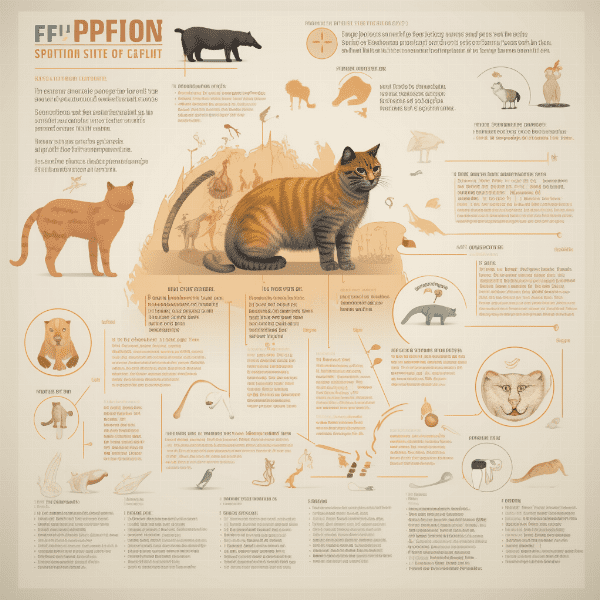Table of Contents
- What is FIP Cat Eye?
- Causes and Symptoms of FIP Cat Eye
- Diagnosis of FIP Cat Eye
- Treatment Options for FIP Cat Eye
- Prognosis and Prevention of FIP Cat Eye
- Living with a Cat with FIP Cat Eye
- Coping with the Loss of a Cat to FIP Cat Eye
- Support and Resources for FIP Cat Eye Owners
- Research and Future Developments in FIP Cat Eye Management
- Conclusion: Managing FIP Cat Eye with Care and Knowledge
What is FIP Cat Eye?
Feline Infectious Peritonitis (FIP) is a viral disease that can affect cats of all ages. The disease is caused by a type of coronavirus and can be fatal. One of the symptoms of FIP is the development of eye problems, also known as Fip cat eye.
How Does FIP Affect the Eyes?
FIP Cat Eye is a condition where the eyes of the infected cat are affected by the disease. The virus can cause inflammation of the tissues in and around the eye, which can lead to a range of symptoms. Some cats may develop conjunctivitis, which is characterized by redness, swelling, and discharge from the eyes. Other cats may experience uveitis, which is an inflammation of the uveal tract in the eye that can cause pain, blurred vision, and even blindness.
How is FIP Cat Eye Different from Other Eye Conditions?
FIP Cat Eye is unique in that it is caused by a viral infection. Unlike other eye conditions, it cannot be treated with antibiotics or other conventional treatments. FIP Cat Eye is also often accompanied by other symptoms of FIP, such as fever, loss of appetite, and weight loss.
How is FIP Cat Eye Diagnosed?
To diagnose FIP Cat Eye, a veterinarian will typically perform a physical exam of the cat and take a thorough medical history. They may also perform a variety of tests, including blood work and imaging studies, to rule out other possible causes of the eye symptoms. A definitive diagnosis of FIP Cat Eye may require a biopsy of the eye tissues.
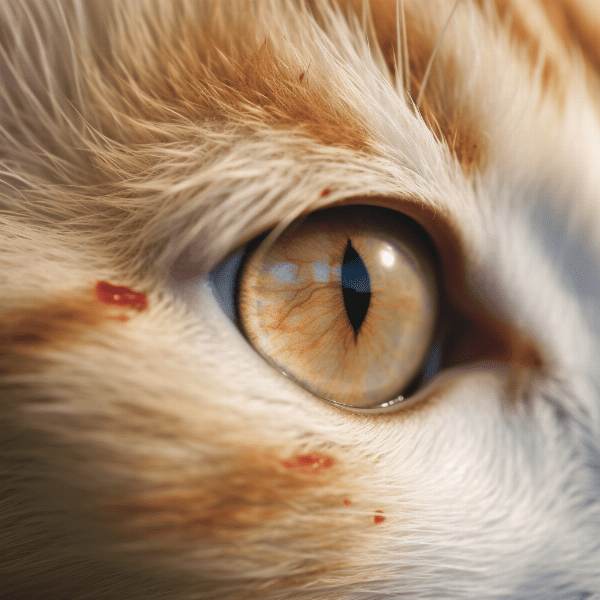
Causes and Symptoms of FIP Cat Eye
Feline Infectious Peritonitis (FIP) is caused by a type of coronavirus that is present in many cats’ intestines. While most cats who are infected with the virus do not develop FIP, a small percentage of cats may develop the disease if their immune systems are unable to fight off the virus.
How Does FIP Cat Eye Develop?
FIP Cat Eye develops when the virus that causes FIP enters the tissues in and around the eye. The virus can cause inflammation of the eye tissues, leading to a range of symptoms. Some cats may develop mild symptoms, while others may experience more severe symptoms that can lead to blindness.
Symptoms of FIP Cat Eye
The symptoms of FIP Cat Eye can vary depending on the severity of the disease. Some cats may only have mild redness and irritation of the eyes, while others may have more severe symptoms such as:
- Swelling of the eyelids
- Discharge from the eyes
- Cloudiness or opacity of the eyes
- Squinting or closing the eyes
- Ulcers or sores on the surface of the eye
- Vision loss or blindness
In addition to these eye-related symptoms, cats with FIP may also experience other symptoms such as fever, weight loss, and loss of appetite.
Can FIP Cat Eye be Prevented?
Currently, there is no vaccine or specific preventative measures that can guarantee the prevention of FIP or FIP Cat Eye. However, maintaining good hygiene practices and minimizing stress on cats may help reduce the risk of infection.
Conclusion
FIP Cat Eye is a serious and potentially life-threatening disease that can affect cats of all ages. It is important for cat owners to be aware of the symptoms of FIP Cat Eye and seek veterinary care as soon as possible if they suspect their cat may be affected. While there is no cure for FIP Cat Eye, early diagnosis and management can help improve the cat’s comfort and quality of life.
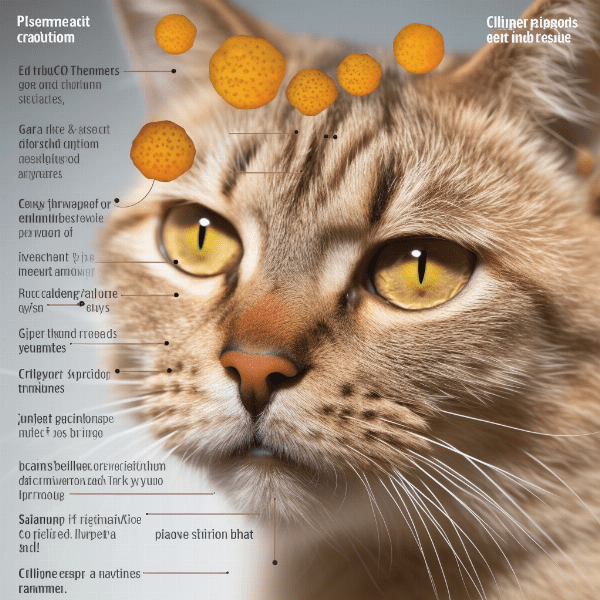
Diagnosis of FIP Cat Eye
Diagnosing FIP Cat Eye can be challenging as the symptoms can be similar to other eye conditions. However, early and accurate diagnosis is important for effective management of the disease.
Physical Examination
During a physical examination, a veterinarian will examine the cat’s eyes for any signs of redness, swelling, discharge, or other abnormalities. They will also check for other symptoms of FIP such as fever, loss of appetite, and weight loss.
Diagnostic Tests
Various diagnostic tests can be performed to help diagnose FIP Cat Eye. Blood work may be performed to look for the presence of antibodies to the coronavirus that causes FIP. Imaging studies such as ultrasound or X-rays may also be used to examine the cat’s eyes and look for signs of inflammation or other abnormalities. In some cases, a biopsy of the eye tissues may be necessary to confirm a diagnosis of FIP Cat Eye.
Differential Diagnosis
It is important to differentiate FIP Cat Eye from other eye conditions that may have similar symptoms. Conjunctivitis, uveitis, and other infectious or inflammatory diseases of the eye may need to be ruled out before a diagnosis of FIP Cat Eye can be made.
Conclusion
Diagnosing FIP Cat Eye can be difficult, but it is important for effective management of the disease. If you suspect your cat may have FIP Cat Eye or any other eye-related condition, seek veterinary care as soon as possible. A thorough physical examination and diagnostic testing can help determine the cause of your cat’s symptoms and develop a plan for treatment and management.
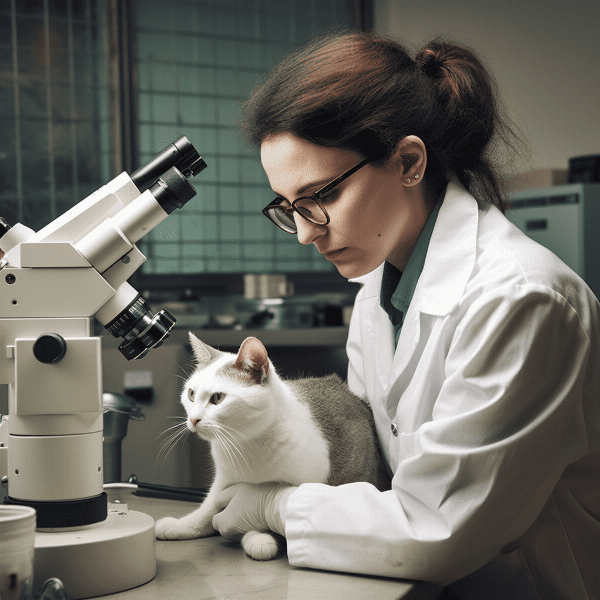
Treatment Options for FIP Cat Eye
While there is currently no cure for FIP Cat Eye, there are various treatment options available to help manage the symptoms and improve the cat’s comfort and quality of life.
Symptomatic Treatment
Symptomatic treatment is aimed at managing the specific symptoms of FIP Cat Eye. Eye drops or ointments may be prescribed to relieve the discomfort associated with conjunctivitis or uveitis. Pain medication may also be given to alleviate any pain or discomfort associated with the eye condition.
Anti-Inflammatory Treatment
Anti-inflammatory medications such as corticosteroids may be prescribed to reduce the inflammation of the eye tissues caused by FIP. These medications can help alleviate symptoms such as redness, swelling, and pain.
Supportive Care
Supportive care is essential in managing FIP Cat Eye. It may include providing a comfortable and stress-free environment, adequate nutrition and hydration, and monitoring for any other symptoms of FIP.
Experimental Treatments
Various experimental treatments for FIP Cat Eye have been investigated in recent years. These include antiviral drugs and immunomodulatory drugs that aim to boost the cat’s immune system. While these treatments have shown some promising results, they are still considered experimental and not widely available.
Conclusion
While there is currently no cure for FIP Cat Eye, various treatment options are available to help manage the symptoms and improve the cat’s comfort and quality of life. It is important for cat owners to work closely with their veterinarian to determine the best course of treatment for their cat. In addition to medical treatment, supportive care is essential in managing FIP Cat Eye and ensuring the cat’s well-being.
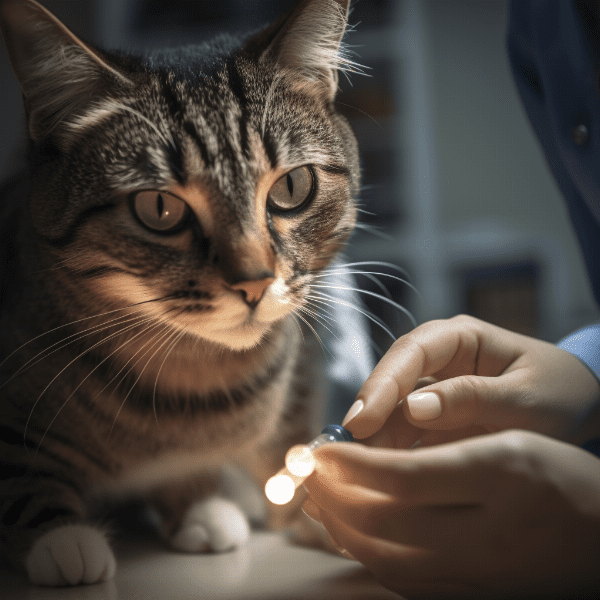
Prognosis and Prevention of FIP Cat Eye
Feline Infectious Peritonitis (FIP) is a serious and often fatal disease. The prognosis for cats with FIP Cat Eye depends on the severity of the disease and the cat’s overall health.
Prognosis
Unfortunately, there is no cure for FIP Cat Eye, and the disease can progress rapidly. In severe cases, the eye condition can lead to blindness or even rupture of the eye. In some cases, the disease may progress to other organs, leading to a more severe form of FIP.
Prevention
Preventing FIP and FIP Cat Eye can be challenging, as the virus that causes the disease is common in cats. However, maintaining good hygiene practices and minimizing stress on cats may help reduce the risk of infection.
Vaccination
There is currently no vaccine that can guarantee the prevention of FIP or FIP Cat Eye. However, there are vaccines available that can help boost a cat’s immune system and reduce the risk of infection. It is important to discuss the risks and benefits of vaccination with your veterinarian.
Conclusion
FIP Cat Eye is a serious and often fatal disease that can have a significant impact on a cat’s quality of life. While there is no cure for FIP Cat Eye, early diagnosis and management can help improve the cat’s comfort and quality of life. Preventing FIP Cat Eye can be challenging, but maintaining good hygiene practices and minimizing stress on cats can help reduce the risk of infection. Vaccination may also be an option for some cats, but it is important to discuss the risks and benefits with your veterinarian.

Living with a Cat with FIP Cat Eye
Living with a cat with Feline Infectious Peritonitis (FIP) Cat Eye can be challenging, both emotionally and financially. However, there are steps you can take to provide the best possible care for your cat.
Providing Comfort
Cats with FIP Cat Eye may experience discomfort, pain, and reduced vision. Providing a comfortable and stress-free environment can help alleviate some of these symptoms. Soft bedding, a quiet room, and toys or puzzles to keep your cat entertained can all help make your cat more comfortable.
Managing Symptoms
Managing the symptoms of FIP Cat Eye is an important aspect of caring for a cat with the disease. Your veterinarian may prescribe medication to alleviate pain, reduce inflammation, or manage other symptoms. Eye drops or ointments may also be prescribed to relieve discomfort and reduce the risk of secondary infections.
Monitoring for Changes
Cats with FIP Cat Eye may experience changes in their vision, appetite, and overall behavior. It is important to monitor your cat closely and report any changes to your veterinarian. Regular check-ups and monitoring of blood work may also be necessary to track the progression of the disease.
Coping with Emotional Stress
Caring for a cat with FIP Cat Eye can be emotionally challenging. It is important to seek support from friends, family, or a support group to help cope with the emotional stress of caring for a sick pet.
Financial Considerations
Caring for a cat with FIP Cat Eye can be expensive, and it is important to consider the financial implications of the disease. Discussing financial concerns with your veterinarian and exploring options such as pet insurance or fundraising can help alleviate some of the financial burden.
Conclusion
Living with a cat with FIP Cat Eye can be challenging, but providing the best possible care for your cat can help improve their quality of life. Managing symptoms, monitoring for changes, and seeking emotional and financial support are all important aspects of caring for a cat with FIP Cat Eye.

Coping with the Loss of a Cat to FIP Cat Eye
Losing a cat to Feline Infectious Peritonitis (FIP) Cat Eye can be a devastating experience. Coping with the loss of a beloved pet can be difficult, but there are ways to manage your grief and honor your cat’s memory.
Allow Yourself to Grieve
Losing a pet can be a significant loss, and it is important to allow yourself to grieve. It is normal to feel a range of emotions, including sadness, guilt, anger, and loneliness. Take the time to acknowledge and process your feelings.
Seek Support
Seeking support from friends, family, or a support group can help you cope with the loss of your cat. Talking about your feelings with someone who understands can be comforting and help you feel less alone.
Memorialize Your Cat
Memorializing your cat can be a meaningful way to honor their memory. Consider creating a scrapbook, planting a tree or flowers in their memory, or making a donation to a charity in their name.
Take Care of Yourself
Grieving can be physically and emotionally exhausting, and it is important to take care of yourself during this time. Eating well, getting enough sleep, and engaging in activities that bring you joy can all help you cope with your loss.
Consider Adopting Another Cat
While it may be difficult to consider getting another pet after losing your cat to FIP Cat Eye, adopting another cat can be a way to honor your cat’s memory and provide a loving home for another animal in need.
Conclusion
Losing a cat to FIP Cat Eye can be a heartbreaking experience, but there are ways to manage your grief and honor your cat’s memory. Allowing yourself to grieve, seeking support, memorializing your cat, taking care of yourself, and considering adopting another cat are all ways to cope with the loss of your beloved pet.

Support and Resources for FIP Cat Eye Owners
Caring for a cat with Feline Infectious Peritonitis (FIP) Cat Eye can be challenging, and it is important for owners to have access to support and resources.
Veterinary Care
Seeking veterinary care is essential in managing FIP Cat Eye. It is important to work closely with a veterinarian to develop a plan for treatment and management of the disease.
Support Groups
Support groups can provide a valuable source of support and information for owners of cats with FIP Cat Eye. Online forums and social media groups can connect owners with others who are going through similar experiences.
Educational Resources
Educational resources such as websites, books, and videos can provide owners with valuable information about FIP Cat Eye and its management. It is important to seek out reliable sources of information and consult with a veterinarian before making any changes to your cat’s care.
Financial Resources
Caring for a cat with FIP Cat Eye can be expensive, and owners may need access to financial resources. Charities and organizations may provide financial assistance for veterinary care or other expenses related to caring for a sick pet.
Conclusion
Caring for a cat with FIP Cat Eye can be a challenging experience, but there are resources available to help owners navigate the process. Seeking veterinary care, joining support groups, accessing educational resources, and exploring financial assistance options are all ways to access support and resources for FIP Cat Eye owners.
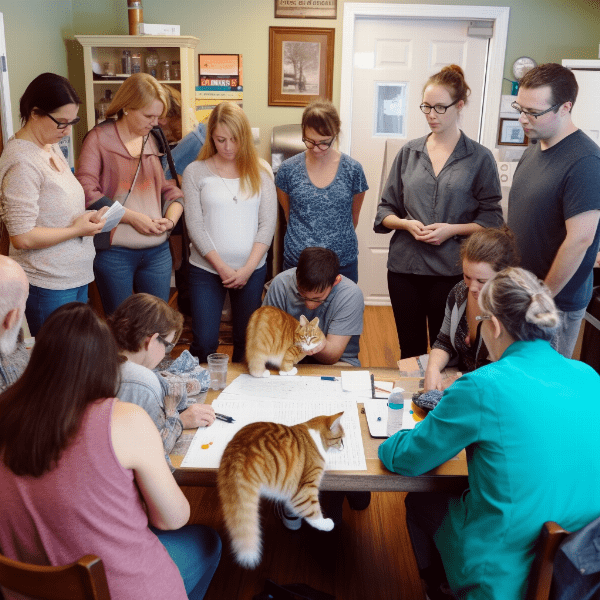
Research and Future Developments in FIP Cat Eye Management
Feline Infectious Peritonitis (FIP) Cat Eye is a complex disease, and ongoing research is needed to develop new treatments and management strategies.
Immunomodulatory Drugs
Immunomodulatory drugs are being investigated as a potential treatment for FIP Cat Eye. These drugs work by modulating the immune system, potentially improving the cat’s ability to fight off the virus. While immunomodulatory drugs have shown some promise in early studies, more research is needed to determine their effectiveness and safety.
Gene Therapy
Gene therapy is an emerging field that is being investigated as a potential treatment for FIP Cat Eye. Gene therapy involves introducing a new gene into the cat’s cells to help combat the virus. While gene therapy is still in the early stages of research, it has shown some promising results in animal models.

Conclusion: Managing FIP Cat Eye with Care and Knowledge
Feline Infectious Peritonitis (FIP) Cat Eye is a complex and often fatal disease that can have a significant impact on a cat’s quality of life. While there is no cure for FIP Cat Eye, various treatment options are available to help manage the symptoms and improve the cat’s comfort and well-being.
Caring for a cat with FIP Cat Eye requires knowledge, patience, and dedication. Working closely with a veterinarian, providing a comfortable and stress-free environment, and monitoring for changes are all important aspects of managing the disease.
Support and resources are available to help owners of cats with FIP Cat Eye navigate the challenges of caring for a sick pet. Seeking support from friends, family, or support groups, accessing educational resources, and exploring financial assistance options can all help alleviate some of the burden of caring for a cat with FIP Cat Eye.
Ongoing research into FIP Cat Eye offers hope for developing new treatments and management strategies for the disease. Antiviral drugs, immunomodulatory drugs, and gene therapy are all potential areas of development.
In conclusion, managing FIP Cat Eye requires care, knowledge, and dedication. While the disease can be challenging, providing the best possible care for a cat with FIP Cat Eye can improve their quality of life and ensure their well-being.




